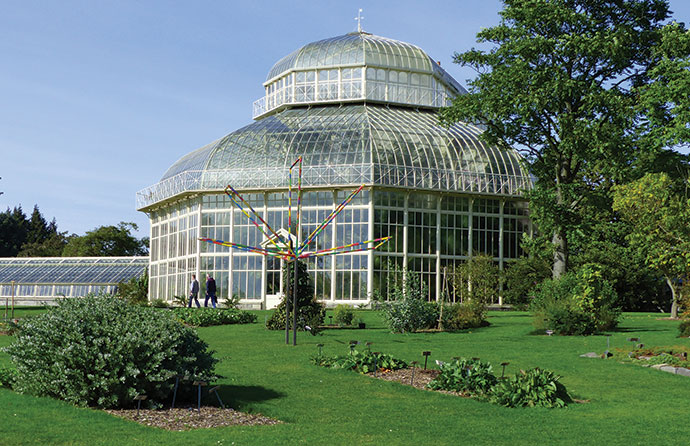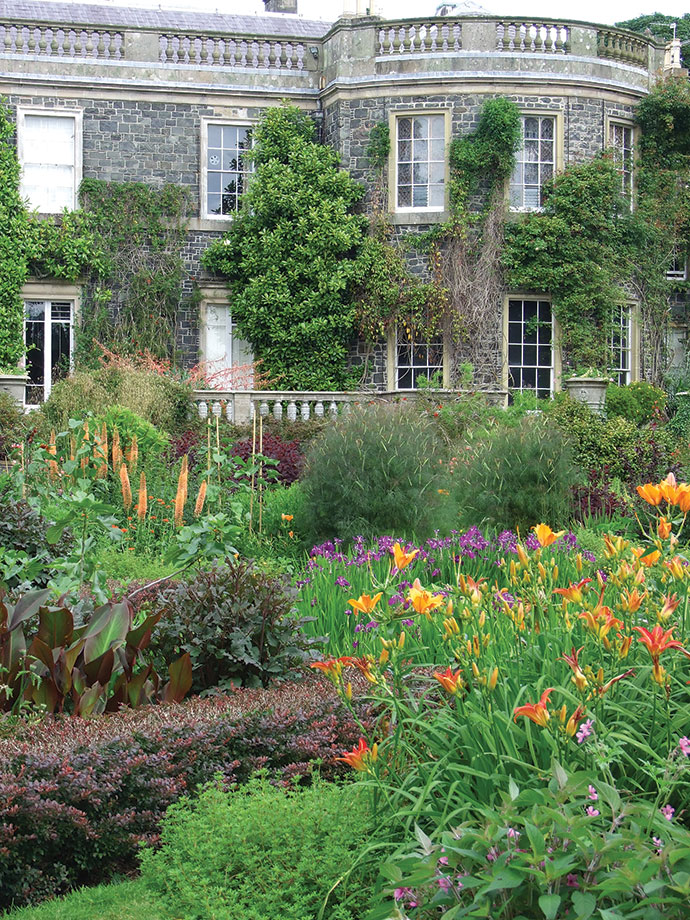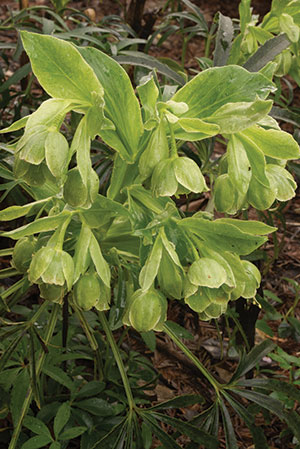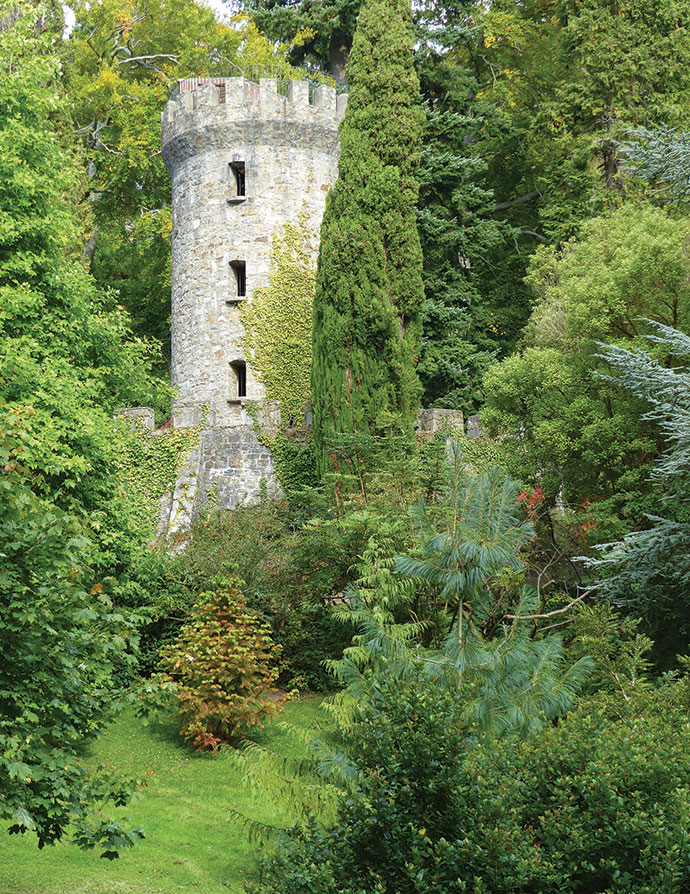If vacation plans have you leaning toward hopping across the Atlantic to enjoy an Irish Spring, the Isle of Eire certainly won’t disappoint — it is indeed a green land of great beauty. Adding to this natural splendor are the many public gardens that can provide plenty of inspirational eye candy for backyard growers wanting to experience the best in botanical beauty. Here are four of my favorite Irish gardens:
- Powerscourt, powerscourt.com. Ranked number three on National Geographic’s Top Ten Gardens of the World list, this is Ireland’s premier garden — or rather that should be “gardens.”
Begun in 1731, Powerscourt’s gardens have evolved into a diverse, well-maintained, 47-acre collection that includes an Italian Garden, Walled Garden and Japanese Garden. Other outdoor features not to miss are its grotto, pet cemetery (more interesting than it seems!), the Dolphin Pond, and Tower Valley, a heavily wooded area that features this estate’s famous Pepperpot Tower. Powerscourt is a short 20-minute drive south from Dublin. - National Botanic Gardens, botanicgardens.ie. Founded in 1795, this 48-acre Eden is located just two miles north of Dublin’s central Old City, and exhibits more than 15,000 species and cultivars from around the world.
Long, winding walkways guide visitors through displays of native as well as hardy introduced plants, while more exotic specimens are protected in the gardens’ world-class greenhouses that include the Curvilinear Range and Palm House. Admission is free. - Mount Stewart, nationaltrust.org.uk/mount-stewart. Tucked away on the eastern coast of Northern Ireland in County Down about 15 miles from Belfast, this 19th-century estate shows off a merry mix of garden schemes and styles, most of which were planted in the 1920s.
“Eclectically artistic” is the phrase that best describes Mount Stewart’s many gardens, which range from the Sunken Garden and Italian Garden to its Spanish Garden, Lily Wood and Shamrock Garden. Also, not to be missed are the neo-classical Temple of the Winds, Tir n’an Og cemetery, and more than three miles of walking trails that wander through the beautiful Irish countryside. - Rowallane, nationaltrust.org.uk/rowallane-garden. Known for its extensive collections of azaleas, rhododendrons and penstemons, Rowallane is a 52-acre, 19th-century showcase of formal and informal gardens using plants from across the globe. The two-acre Walled Garden is a prime attraction, but its impressive Rock Garden Wood is another grand treat for the eyes. Also, don’t miss strolling the scenic Woodland Walk and Farmland Trail. Rowallane is 11 miles southeast of Belfast.

The Palm House at the National Botanic Gardens

Mount Stewart

Bear claw hellebore
If dreams of an Irish spring have you thinking green, green, green, think way outside the botanical box and dare to add green-flowering plants to your garden. Although uncommon, they do exist.
Bells of Ireland (Moluccella laevis) is an obvious example, but also consider ‘Green Star’ gladiolus, ‘Envy’ zinnia, ‘Green Wizard’ rudbeckia, bear claw hellebore (Helleborus foetidus) and the green rose (Rosa chinensis viridiflora). Some of these unusual beauties might be found at local garden centers this spring, but all of them are available if you let your fingers do the walking on the web.
To Do in the Garden
March
- After its flowers fade, forsythia can be pruned. To maintain a natural flowing shape, concentrate on pruning back only older, larger branches.
- Berry-producing plants such as holly, nandina and pyracantha can also be pruned now.
- Having the blade sharpened on your lawn mower will have two positive effects: One, the mower will run more efficiently, thus use less gas and cause less air pollution; and two, the blade will cleanly cut rather than tear grass, which could leave ragged ends, and invite diseases to come out and play.
- Spring means green, unfortunately even in the water garden, where warming temperatures can cause the algae population to explode and discolor the water. In balanced systems this is a temporary condition, but if the yuck persists, replace a quarter to a third of the water in the pond with fresh water.
April
- Cutworms can get an early spring garden off to a roaring stop by chomping tender seedlings down to the ground, but these pests can be easily countered by knocking the bottoms out of paper cups and setting a cup around each seedling like a collar, making sure the barrier is buried at least one inch in the ground.
- Aphids can be another problem for tender young foliage, so check the undersides of new, developing leaves weekly for any signs of these pinhead-sized pests.
- Does the new growth of your apple, blackberry, hawthorn, cotoneaster, pear, pyracantha or raspberry look burnt? Fire blight is the disease’s aptly descriptive name, and once it appears it is best controlled by using clean pruners to cut the afflicted limbs off and then tossing them away. Keep the pruners clean by dipping them in a 10 percent bleach solution after every cut.
- Prefer to plant seeds but don’t like the backache that comes with all the bending and squatting? Use a 4-foot piece of 1-inch diameter PVC pipe to poke holes in prepared garden dirt and roll seeds down into each hole while you are standing.







